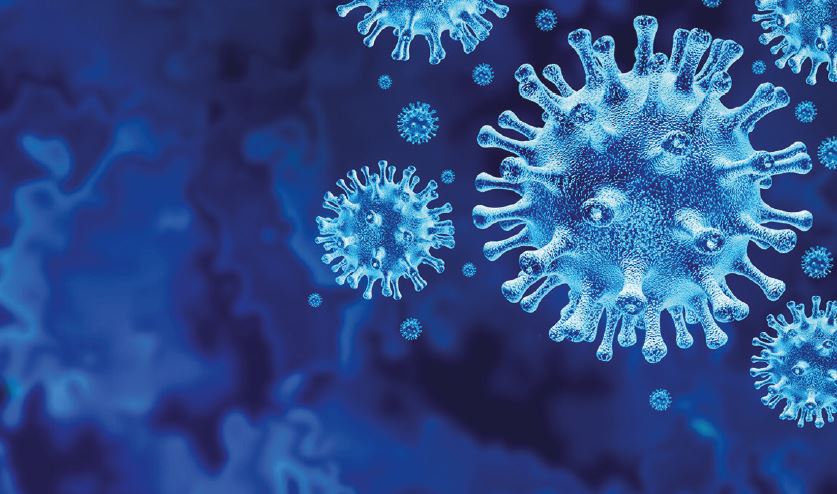It’s the beginning of September and the past six months have been a rollercoaster of fear, anxiety, awareness, learning, and most of all compromise. A season of new rules and then bending the rules. If I wear a mask and keep my distance, I can walk into town with my dog (as long as she also agrees to keep distance from other dogs). Hand sanitizer is now the savior that lets your kids play on an otherwise empty swing set. If I spend enough time at home, I can hug my elderly mom?
The thing most likely to prevent the spread of COVID-19—would be to stay at home. But as government controls on our behavior lessen, we all have a giant jumble of decisions before us and life has become a sticky bog in which we wade through evidence and convenience, hoping we’re stepping on solid ground.
In other words, which risks are worth taking for which rewards?
Our lives will never be the same as before the coronavirus, so we can’t live like we did before. We’re no longer living like we did immediately after it appeared, either. Instead we’re stuck living somewhere in the murky middle. When multiplied through the population, seemingly small decisions have the power to either dramatically slow or accelerate this pandemic. In our new normal, these crucial choices have become an everyday occurrence, but they also carry a moral weight that makes them feel completely different than picking out which apple looks the freshest at the market or which shoes I should wear today. In a pandemic that is stuffed to the rim with unanswerable questions, risks, and information, this is our daily no-win situation. It puts the nuances of decision-making front and center. And no one can tell us exactly what we ought to do.
Choices in this murky middle
Should the city open up? Should kids go back to school? We are faced with so many choices—not just what to do, but how to do it and when and where. The stakes are high, 864,000 people in the world have died, and even more than that suffer long term effects of a disease that’s only in its beginning stages (Medicine, 2020). Because of those stakes, we’ve assigned a morality to all these choices—something that psychology researchers have shown leads us to frame things as “all good” or “all bad,” and lose sight of the gray areas all around us (Jay J. Van Bavel, 2012).
Attempts at providing structure
Right now, you can go online and find multiple charts that visually categorize what were once the activities of daily life by risk level. I particularly like the one designed by Epidemiologist Saskia Popescu and Bioethecist Ezekiel Emanuel because it lays out not just the risk levels of various behaviors—getting a haircut, visiting the dentist, buying a new shirt—but also the underlying factors that can make an activity more or less risky.
But the trouble with the murky middle is that a general idea of what is riskier isn’t the same thing as a clear delineation between right and wrong. These charts—even the best ones—aren’t absolute arbiters of safety. Variables and assumptions aren’t trivial to calculating risk. Nor are they static. There’s different muck under your boggy feet in different parts of the country, at different times, and even with different people.
So how should we make choices in the murky middle?
The coronavirus pandemic isn’t going away anytime soon. We’ll need to learn to live with it for now. We need to remember that nothing is zero risk. It’s about trying to reduce risk as much as possible and to know what to look for when you’re trying to make decisions. The risk propositions of some other activities aren’t always as clear-cut and will depend on how you approach them. This is where we really need to sharpen our decision-making skills, open our minds, and rely on what we’ve learned. One big warning: Your personal risk depends on your age and health, the prevalence of the virus in your area and the precautions you take during any of these activities.
For example, taking public transportation is listed as a high-risk, red-colored activity on the chart we referenced. You are in an enclosed space where you may have prolonged, close contact with others, and there are high-touch surfaces involved (doors, chairs, etc.). But is it always high risk?
It could be the case that busses and trains in a certain city, or within a certain company, have put the proper precautions in place. Adequate social distancing, masking requirements, proper ventilation and open windows, and sanitizing measures could bring a bus trip down into a less risky category of activity.
This is a perfect example of how the degree of safety depends on the degree to which you comply with the guidelines. It’s really about assessing the risk of an activity and making a decision.
One of the things about being faced with a global crisis is that it reveals the kind of person you really are. It strips you down to your elements—who you are at your core, what you value, what’s important to you. This is the diamond that emerges from the immense pressures surrounding us in these challenging times. You are the diamond and everyone plays a part in our community, our society, our city, our country. Expand your mind when you make decisions and when you see others. Look through the murky middle as you make choices for yourself and your community and always ask—what role do I play?

